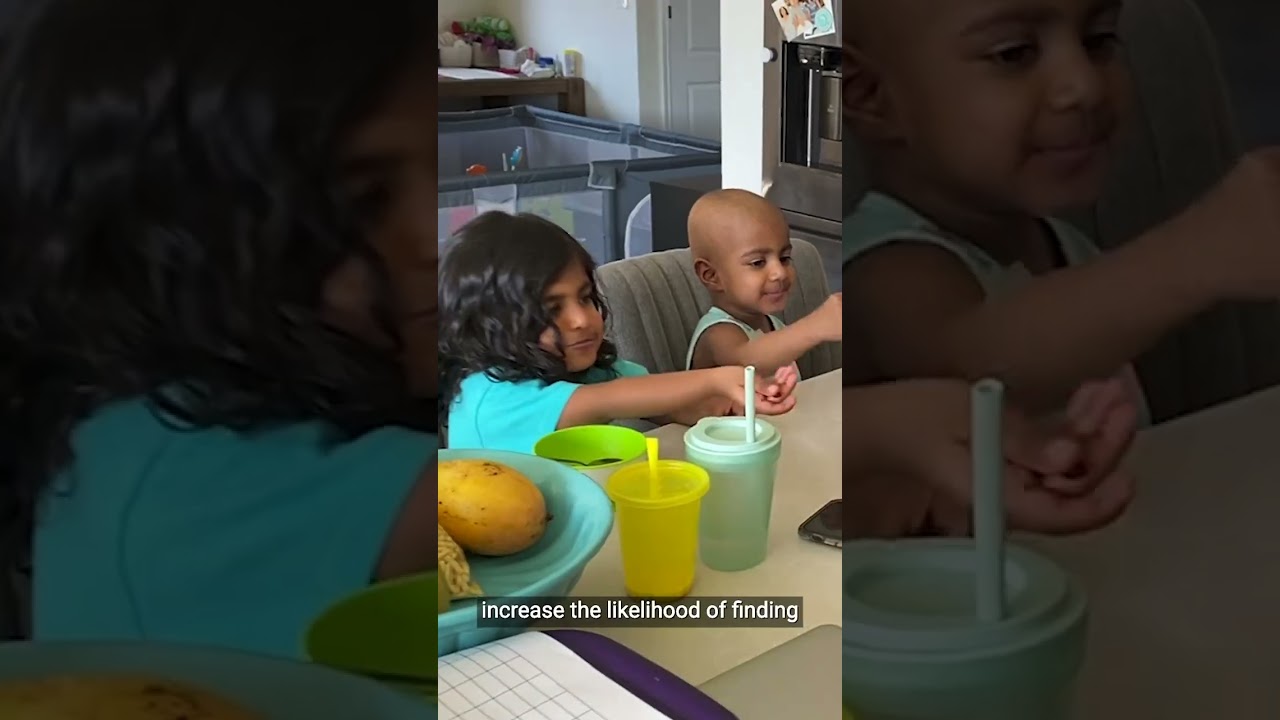Ethnic diversity and stem cell donation
A stem cell donation can be used to treat more than 80 serious and life-threatening illnesses.
People are more likely to find a stem cell match with a donor of similar ancestral or ethnic background. However, only 25 per cent of people find a stem cell match within their own family.

Odds of finding a match by ethnicity
Currently, people who are Black, Indigenous, Asian, Hispanic or of mixed-race heritage collectively make up only about a third of registrants. Having a stem cell registry that is as diverse as the Canadian population ensures that people in need of a lifesaving stem cell transplant are more likely to find a match. That’s why we encourage people from all ethnicities and ancestries who are between the ages of 17 and 35 to join the Canadian Blood Services Stem Cell Registry.
A dad’s journey to donate stem cells
Both of Sanjay’s twin daughters, Misha and Zoey, have a rare genetic condition that affects their ability to fight infections. The only cure is a stem cell transplant, but because the twins are South Asian (an ethnic group that is underrepresented in Canada's stem cell registry), finding a match has been challenging. After almost two years of searching for an unrelated donor match, Sanjay made the decision to become a donor for his daughters, even though he was only a partial match.
Three ways to donate stem cells
Peripheral blood stem cells (PBSC)
Procedure time: 4-6 hours.
Most often PBSCs are collected through a non-surgical process similar to donating blood called apheresis.
Stem cells are separated from the blood and collected.
Bone marrow
Procedure time: 45-90 mins.
Less often bone marrow stem cells are collected from the back of the donor's pelvic bones through a surgical procedure performed under general anesthetic.
Umbilical cord blood
Procedure time: Immediate*.
Cord blood is the leftover blood in the umbilical cord and placenta after a baby is born. It is usually thrown away as medical waste, but contains rich, lifesaving stem cells.
* Your cord blood donation is collected after the safe delivery of the baby. It does not interfere with your birth plans, including delayed cord blood clamping.
People who donate PBSC vs. bone marrow



More than 75 per cent of patients must rely on a volunteer donor found on a stem cell registry. You could be the one.
Join our stem cell registry. Visit blood.ca/stemcells.
Myths and facts about stem cell donation
There are a few common misconceptions about donating stem cells that can make the process seem scary or intimidating — but it is so much easier than most people think.
Myth #1: Stem cell donation is painful and always involves surgery.
Fact: There is a common myth that stem cell donation is a painful procedure involving spinal cord surgery — but this is simply untrue! Stem cells are not taken from the donor’s spinal cord, and not all stem cell donations involve surgery. Most stem cells are collected through a needle in the arm, just like an apheresis platelet or plasma donation. Only bone marrow donation involves the use of anesthesia and is performed in a sterile surgical suite. In general, stem cell donation may cause slight discomfort or mild to moderate side effects (such as fatigue, headache or back pain), but these last only a short while, from a few hours to a few days.
Myth #2: Stem cell donation involves a lengthy recovery process.
Fact: Recovery after a stem cell donation varies from one donor to another, but the recovery period for a donation from peripheral blood (through a needle in the arm) is often much quicker than recovery from a bone marrow donation. Most peripheral blood stem cell donors can return to work the day after their donation.
Myth #3: If I donate stem cells, my body cannot replace them.
Fact: After a stem cell donation, the body replaces donated blood stem cells within six weeks. Most donors are able to get back to their usual routine within just a few days.
Myth #4: I can just donate directly to a family member if they need a stem cell transplant.
Fact: The requirements for finding a genetic match are so precise that fewer than 25 per cent of those in need find a match within their own family. People waiting for a stem cell transplant have better odds of matching with someone who is unrelated but shares a similar ancestral and ethnic background.

Stem cell donation process cheat sheet
There’s a lot to know when it comes to stem cell donation, and we understand that it can feel overwhelming. That’s why we created this cheat sheet. It’s a helpful resource for answering any questions you may have about stem cell donation prior to registering.
Why is it important to register before age 35?
Research suggests that the age of a stem cell donor is one of the most important factors influencing the success of a stem cell transplant. Younger donor age is associated with fewer transplant-related complications such as graft-versus-host-disease. As such, younger donors offer patients potentially better outcomes, including better survival rates.

